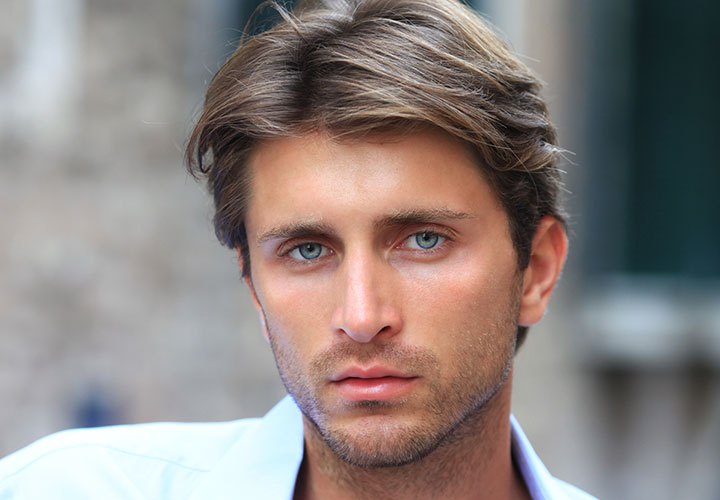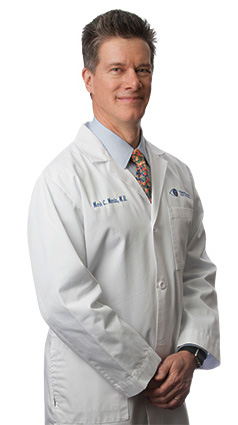
Recent discoveries of the anti-inflammatory effects of Intense Pulsed Light (IPL) have led to its use in the treatment of dry eye disease. IPL is not a laser, but a light-based therapy. It has long been used in dermatology to treat vascular facial lesions, rosacea spots, and pigmented areas. IPL can be used to treat evaporative dry eye disease.
Dr. Mark C. Maria, Board Certified Ophthalmologist, of Fava and Maria Eye Associates in conjunction with Valley View Laser M.D., can determine if you suffer from dry eye and whether IPL therapy is the answer to your eye discomfort.
What is Dry Eye?
Dry eye occurs when your eye does not produce tears properly, or when the tears are not of the correct consistency and evaporate too quickly. Recent research has implicated that inflammation is a contributing factor to dry eye problems. Inflammation on the surface of the eye and within the cornea often occurs with dry eye. Untreated, dry eye can lead to blurry vision, burning or gritty feelings, red eyes, corneal pain, scars or ulcers, and occasionally some loss of vision. Dry eye can make it difficult to perform daily activities such as reading, driving, working at a computer station for long periods of time, or being in a very dry environment such as the cabin of an airplane or a closed office. Permanent vision loss from dry eye is uncommon.
The normal tears are a sandwich consisting of three layers. The outer layer is an oily layer produced by the meibomian glands within the eyelids and prevents evaporation of the tears. The middle layer, produced by the lacrimal gland, is a watery layer and provides moisture to the eye. The inner layer is a mucous layer that rests against the eye and allows the liquid to spread out across the surface. The inner layer is produced by the accessory glands of the eyelid.
There are two main types of dry eye that often overlap: evaporative dry eye and aqueous tear-deficient dry eye. Evaporative dry eye results from inflammation of the meibomian glands located in the eyelids. These glands make the lipid or oily part of tears that slows evaporation and keeps the tears stable. Inflamed glands lead to an abnormal lipids content and secretion, which allows excessive evaporation of the natural tears. This is the more commonly experienced type of dry eye disease. Aqueous tear-deficient dry eye is a disorder in which the lacrimal glands fail to produce enough of the watery component of tears to maintain a healthy eye surface.
Dry eye symptoms may include: stinging or burning of the eyes, a sandy or gritty feeling as if something is in the eye, and episodes of excess tears following very dry eye periods, sometimes increasing when outdoors or when windy. Patients report a stringy discharge from the eyes as well as occasional pain and intermittent redness and blurring. Wearing contact lenses can become intolerable; activities that require sustained visual attention such as reading, working on the computer, or driving can be fatiguing.
Dry eye can be a temporary or chronic condition. It can be associated with a number of other systemic conditions or environmental factors. Medications, skin diseases, pregnancy, menopause and allergies are causes for the development of dry eye. Dry eye can affect anyone and at any age; however, the condition is much more common as we get older. Nearly five million Americans age 50 years and older are estimated to have dry eye. Of these, more than three million are women and more than one and a half million are men.
It is suspected that there are tens of millions more who have not been diagnosed yet with dry eye but suffer from dry eye symptoms. Dry eye is more common for women after menopause. Women who experience menopause prematurely are more likely to have signs of dry eye. It is also associated with chronic use of certain medications and those that suffer from abnormal thyroid function. Many patients with evaporative dry eye have associated rosacea and blepharitis.
Why IPL Therapy for Dry Eye?
Recent studies have shown that IPL can be used to treat evaporative dry eye because it targets abnormal blood vessels and increases the flow of impacted meibomian secretions. Filters are used to apply specific wavelengths of light to target abnormal blood vessels around the eyelids and skin that are often responsible for causing eyelid inflammation and resultant meibomian gland dysfunction.
Conventional dry eye treatments involve several therapies often combined for one individual. Artificial tears are used to replace those not being produced or those that evaporate too quickly. Punctal plugs are used to block the tiny drainage system in the inner corners of the eyelids to retain more moisture in the eye. In addition, anti-inflammatory medications are used to suppress inflammation in the tear glands and promote more normal functioning. Oral supplements are a useful adjunct to improve the consistency of the lipid layer of the tear film. Unfortunately, even with combined therapy, many patients still suffer from the discomfort and irritation of dry eye without much relief.
What is the IPL Procedure Like?
During the IPL procedure, the light therapy is not applied directly to the eye; eye protection is carefully applied during the procedure. Dr. Maria, or one of his associates, will first determine the light settings based on your skin type. A protective eye shield is gently placed over your eyes. A cool gel is applied to the skin surface and then the IPL treatment is performed. Most patients experience a tingling and heating sensation as the light is applied. Lastly, the meibomian glands are expressed to relieve the gland obstructions.
The procedure is relatively comfortable and quick, taking only about 20 to 25 minutes in total. Most patients require four treatments initially (one per month) and then maintenance treatments are required on an annual basis. Treatments may vary depending upon the severity of each individual patient’s disease.
Immediately after the treatment, you may return to normal activities. The use of sunblock is recommended on areas that are exposed to the sun. This is important even without IPL treatment, but is more important after the light treatments. After the initial treatment, most patients report some improvement in their symptoms. Studies have shown an objective increase in tear function after each treatment, with maximum improvement occurring after the fourth or fifth treatment.
Visit the Gallery to view after treatment results.
After years of suffering and searching for relief from dry eye symptoms, try this relatively painless, non-invasive advanced technology therapy and start living again!

